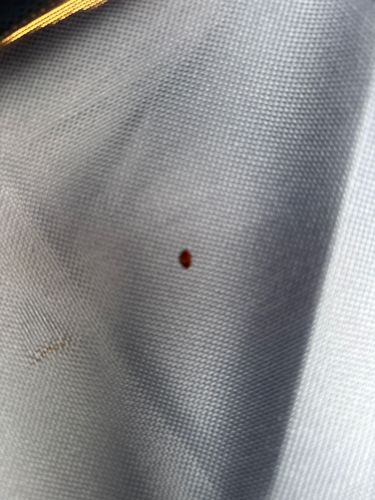Bird Mite
Scientific Name: Dermanyssus gallinae or Ornithonyssus sylviarum (depending on specific species, which is hard to confirm from the image alone)
Order & Family: Acari, Dermanyssidae (e.g., Dermanyssus gallinae or Ornithonyssus sylviarum)
Size: Approximately 0.7-1.0 mm (unfed) to 1.0-2.0 mm (engorged with blood). They are very small, oval-shaped arachnids, appearing reddish-brown or black when engorged.

Natural Habitat
Bird mites typically inhabit bird nests, particularly those of pigeons, starlings, sparrows, and chickens. They can also be found in poultry houses. When their primary hosts leave, they may migrate into human dwellings.
Diet & Feeding
Bird mites primarily feed on the blood of birds, especially nestlings. When their primary bird hosts are unavailable, they may bite humans and other mammals, although they cannot survive or reproduce on human blood alone.
Behavior Patterns
Bird mites are commonly found in bird nests. After birds fledge or abandon nests, the mites may seek new hosts, including humans, migrating indoors through cracks and crevices. They are most active at night when seeking blood meals. Their bites can cause itching and skin irritation.
Risks & Benefits
Potential Risks: Bird mites can cause itchy bites, leading to skin irritation, dermatitis, and allergic reactions in some individuals. They are not known to transmit diseases to humans. Potential Benefits: No direct benefits to humans, but as part of the ecosystem, they contribute to the natural regulation of bird populations.
Identified on: 8/18/2025